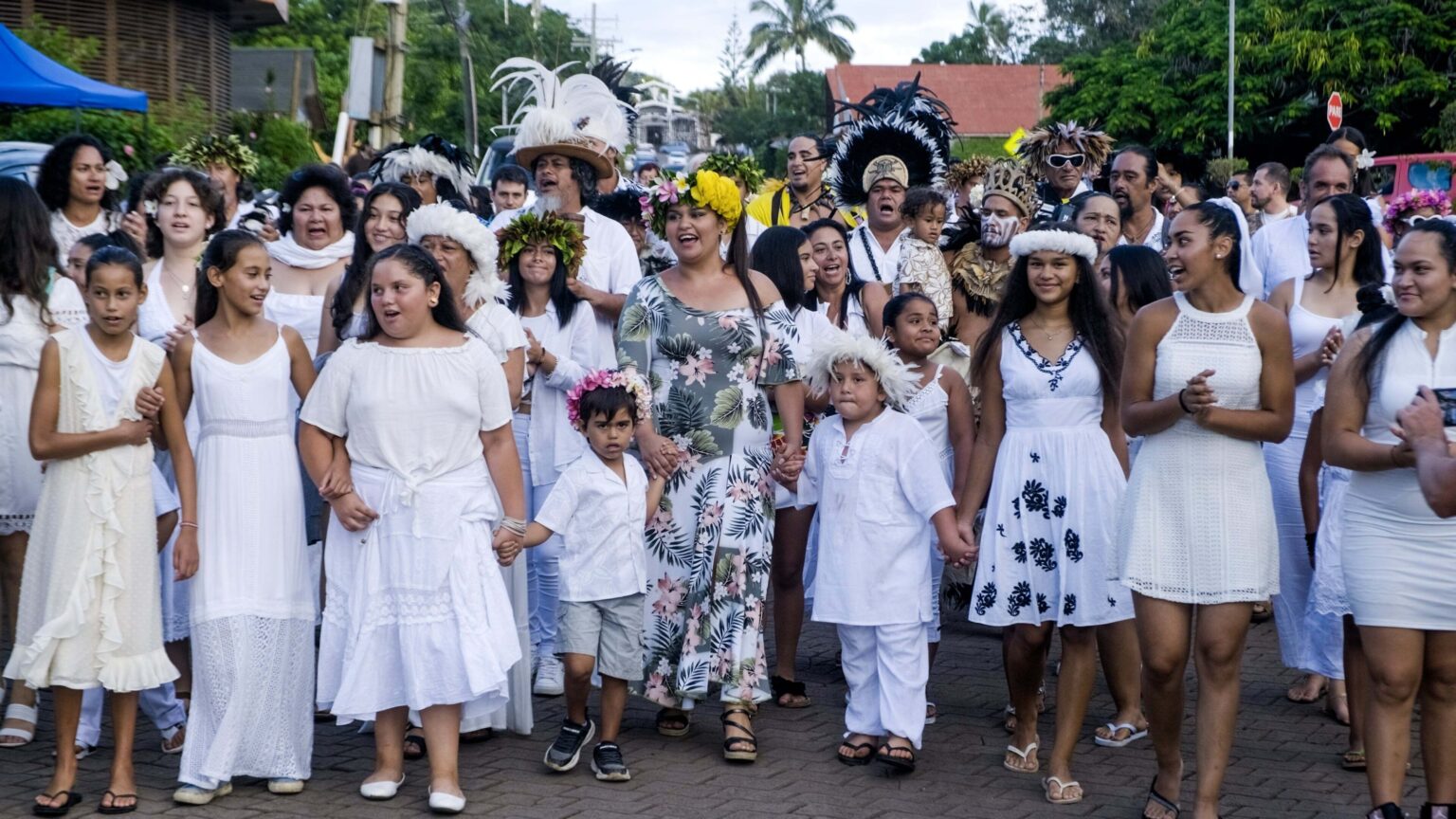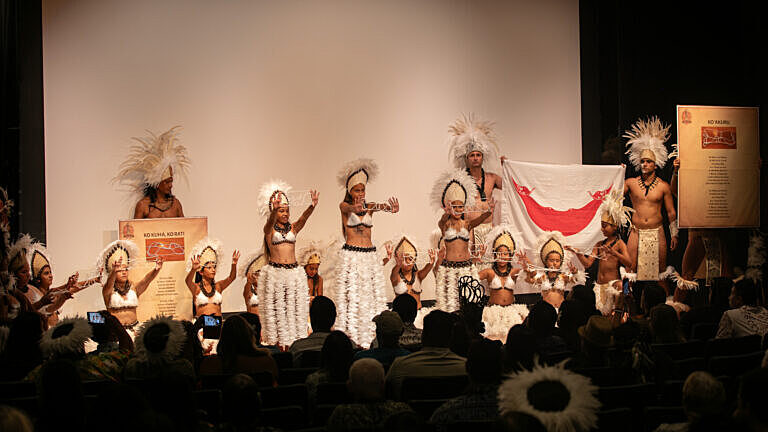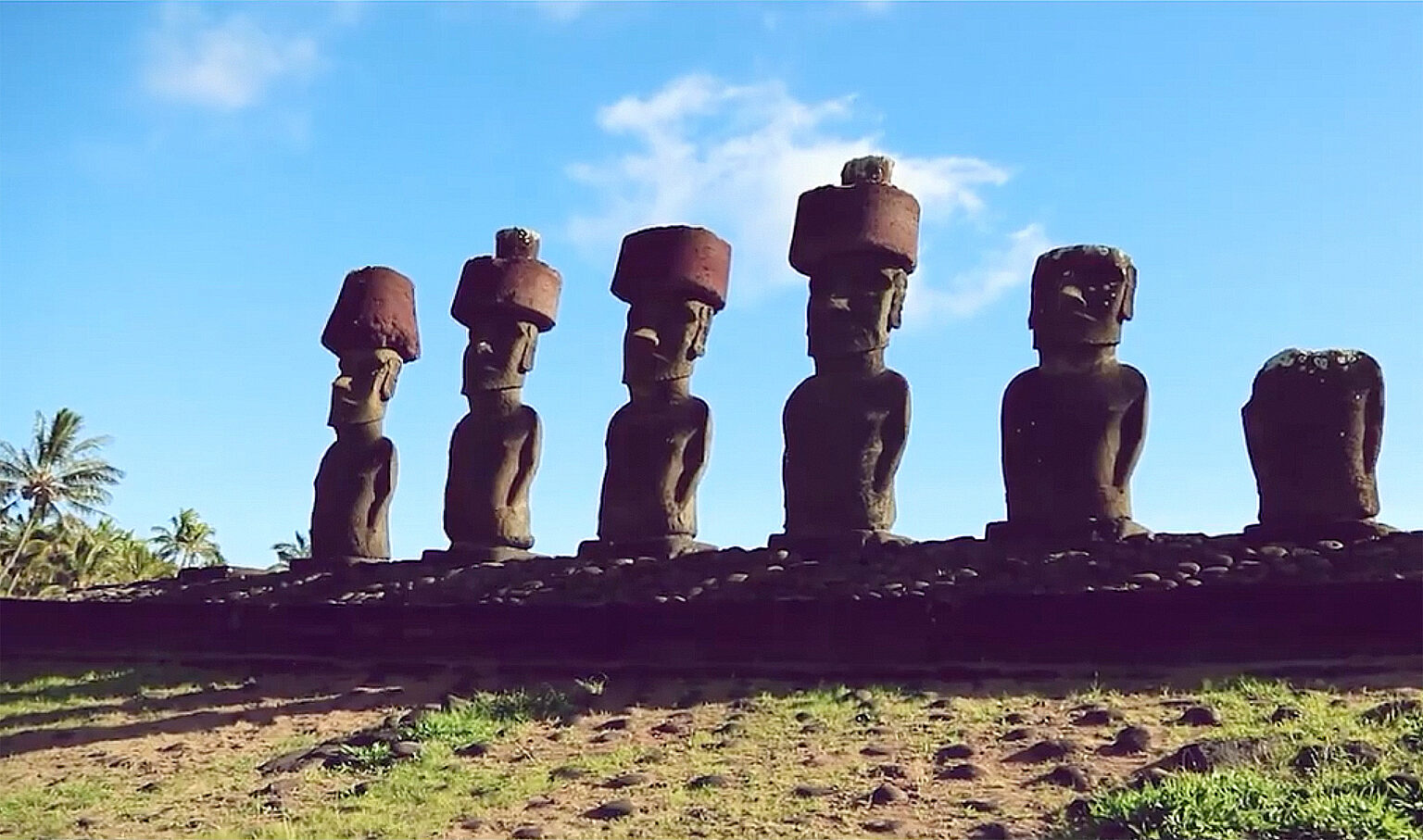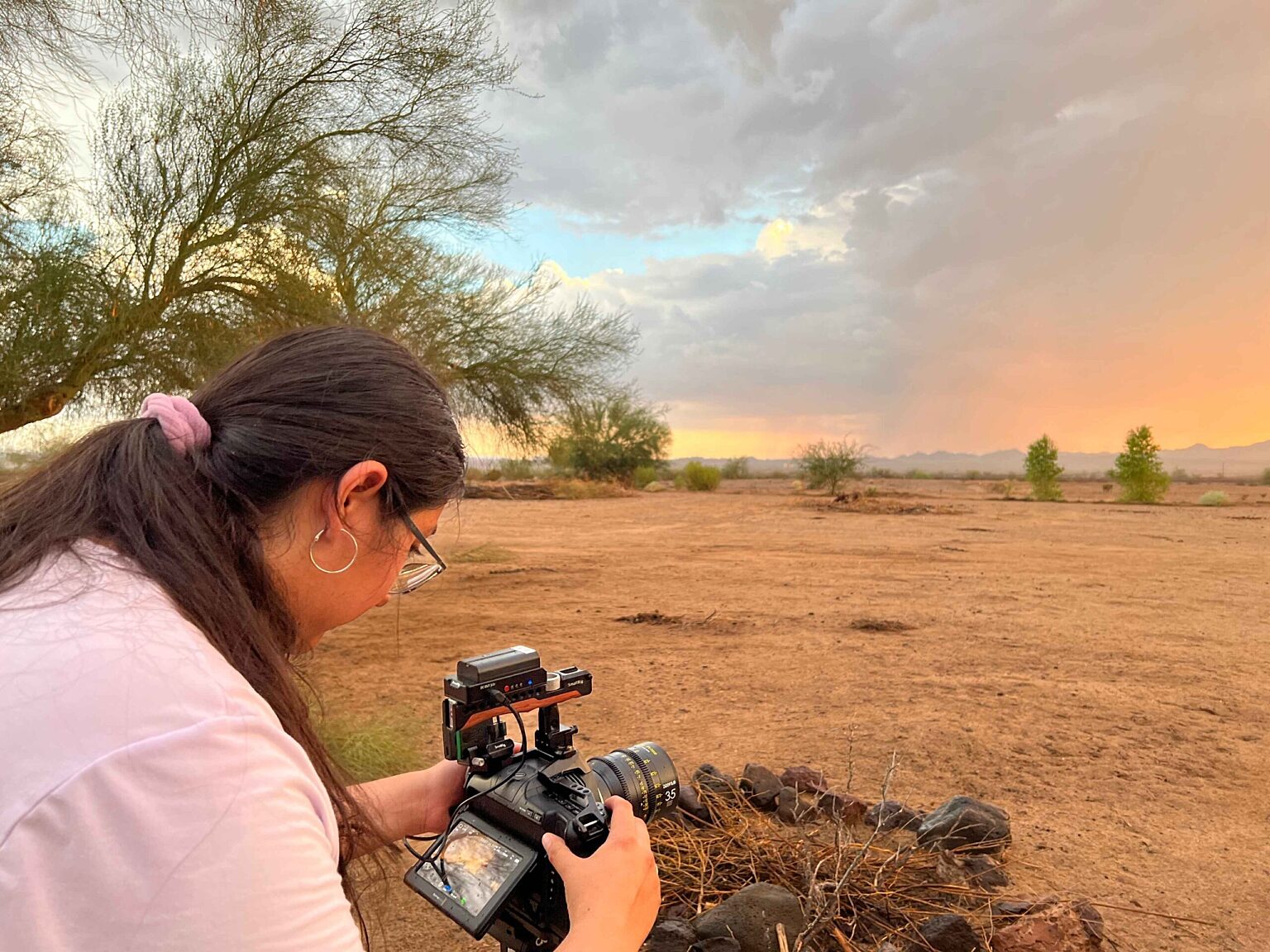
May 12, 2024
Trailer: Te Pito o Te Henua
An indigenous community on the most remote inhabited island in the world prepares to host its most important annual celebration, and reinforce deep connections to their culture, language and land.
Watch
Members of the Rapa Nui comnunity welcome attendees at the screening of their film - "Te Pits o Te Henua" or "The Navel of the World" - during the Festival of Pacific Arts & Culture in June. Photoby Dan Lin, Nia Tero.
July 8, 2024
Traveling more than 4,600 miles in June to attend the Festival of Pacific Arts & Culture (FestPAC) in Hawai’i, members of the Rapa Nui delegation welcomed attendees to a preview of their film “Te Pito o Te Henua” or the “The Navel of the World."
The screening of the Wayfinders Circle film was held at the Honolulu Museum of Art, and opened with a performance filled with cultural pride and joy from a group of Rapa Nui dancers, singers and musicians. Children and adults took turns showcasing the beautiful dance and song of Rapa Nui on a stage at the theater. At times interactive, with audience members called to dance with some of the Rapa Nui, there were many smiles throughout the evening. With white- and red-colored Rapa Nui flags waving in the audience, the intergenerational event opening also included remarks from Rapa Nui’s queen, or ‘Ariki, Nehe Nehe Pakomio Atan.
For some Rapa Nui people, like Veri Teave Tuki, who is the coordinator of the Tāpati Rapa Nui festival, the film marks a shift in the way stories are told about their island and people. It is a point of pride for Teave Tuki to have invited the Wayfinders Circle to come to Rapa Nui to collaboratively create a film about the Tāpati, a large festival held annually on the island. The film tells the story of the selection of the Tāpati Rapa Nui queen at the festival, documenting one family’s journey.
“There have been many recordings about the Tāpati Rapa Nui. It’s very famous. A lot of other countries have come to record the festival,” Veri Teave Tuki says. “But it’s never been done from the viewpoint of Rapa Nui or a Rapa Nui within the [festival] organization.”
She adds that this perspective is very important. “We have a very powerful culture. The majority of the world knows us for our large statues, the moai, our protectors,” she says. “But we also have non-material riches. It’s our language. It’s our culture.”
The film’s name references what the Rapa Nui people regard their land to be – the navel of the planet.
“The Navel of the World” is part of a series of short films produced by the Wayfinders Circle. Rapa Nui is the name by which people of the island call themselves and their homelands. Easter Island is the name given by colonizers. Rapa Nui is one of more than a dozen Indigenous Peoples who are members of this diverse global group.
The Wayfinders Circle supports and gathers Indigenous guardians from around the world who protect their lands, waters, and territories. It is also a learning network dedicated to investing in Indigenous Wayfinders and sharing possible pathways for human societies to achieve ecological, social, cultural and spiritual harmony. The Wayfinders Circle is convened by Nia Tero, the Pawanka Fund and the World Union of Indigenous Spiritual Practitioners.
“I’d like to thank the people of Rapa Nui for sharing this beautiful story and allowing us to be partners and be able to share their story, their culture, their language,” says Nia Tero Chief of Strategy and External Affairs ‘Aulani Wilhelm. “We really are grateful for the partnership of Rapa Nui for working with us to make sure this is really your story.”
Nāmaka Rawlins (Hawai’ian), a member of the Pawanka Fund’s guiding committee, was also at the event and thanked the Rapa Nui for their partnership.
“The film shows that the Indigenous Rapa Nui people are cultivating a new generation of practitioners of the language, arts and culture of Rapa Nui. They are doing it for themselves. This is self-determination, not as individuals but as a collective Rapa Nui people,” she said.
Learn more:

May 12, 2024
An indigenous community on the most remote inhabited island in the world prepares to host its most important annual celebration, and reinforce deep connections to their culture, language and land.
Watch
April 17, 2024
Self-governance is leading the way forward for a Pacific Island community that is vulnerable to climate change.
Read
April 4, 2024
In the film from the Wayfinders Circle, water and culture bring together a father and daughter as they fight to protect their Indigenous homelands in Southern California.
Read